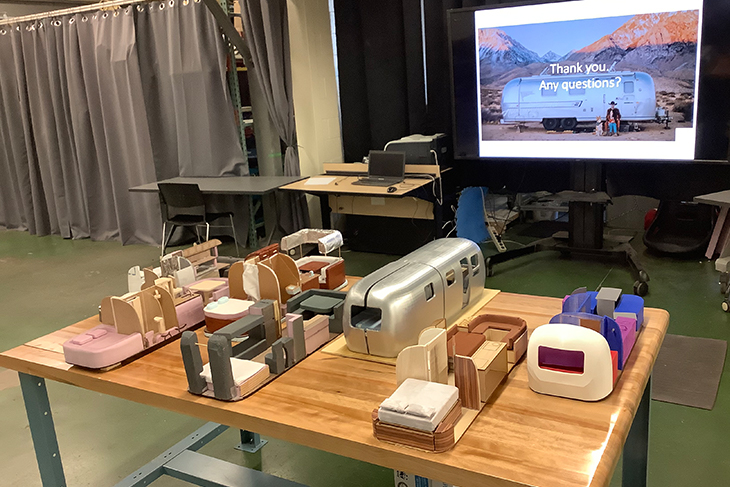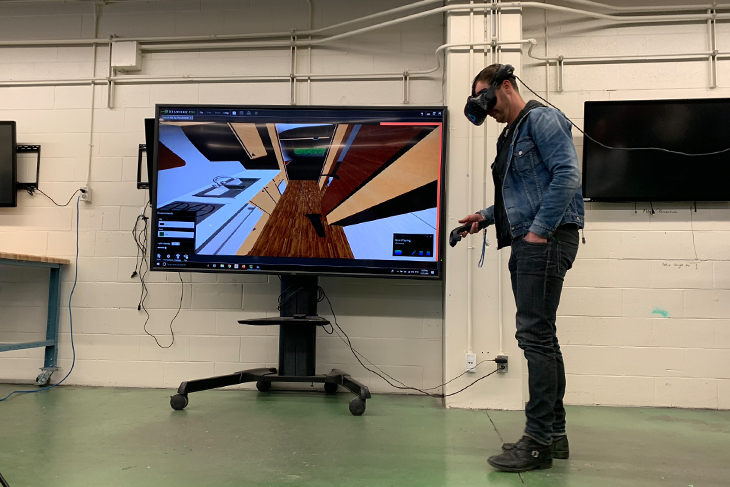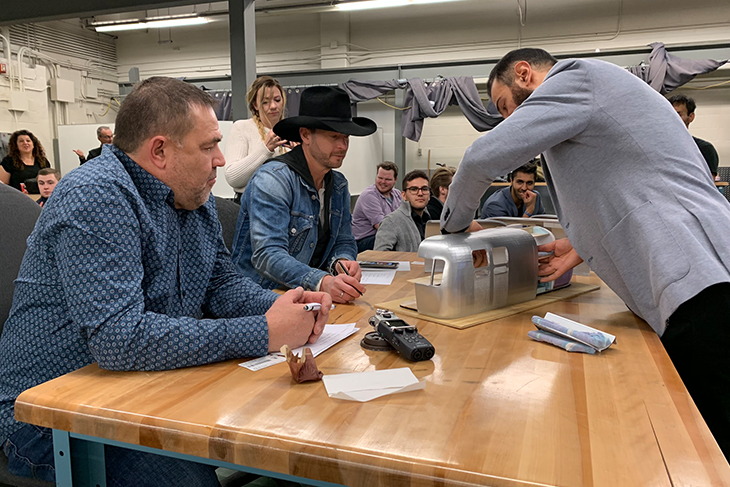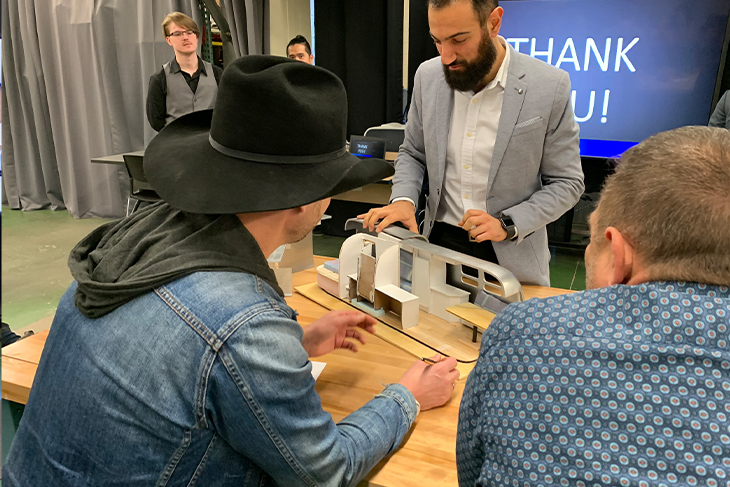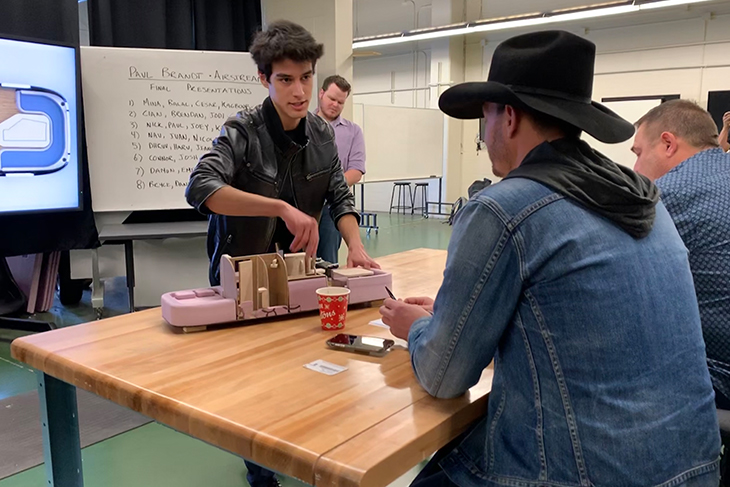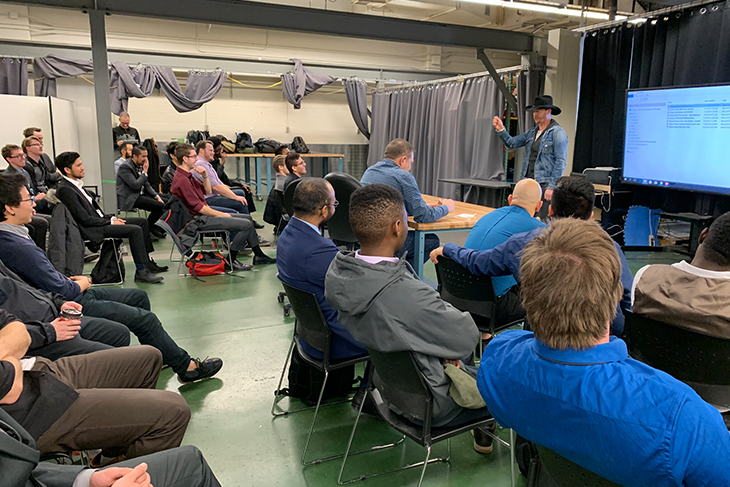As SAIT’s first Maker in Residence, country singer-songwriter Paul Brandt helped students in both the School of Manufacturing and Automation and the School of Transportation express their technical expertise in creative ways — an important skill in the digital world.
It wasn’t a typical day at SAIT — at least, not for about 30 Mechanical Engineering Technology students. They weren’t expecting to be greeted by a Juno Award-winning country singer during their Product Development class, but there he was: big black cowboy hat, jean jacket and all — Paul Brandt.
Brandt was there to launch a project involving his vintage 1973 Airstream trailer. His challenge to students: help redesign and restore this silver rocket on wheels.
“I call it the Albertabound trailer,” Brandt says. “My family lives on a ranch with a house that’s more than 100 years old. I asked the students to take that slice of our province’s history and incorporate it into the trailer.”
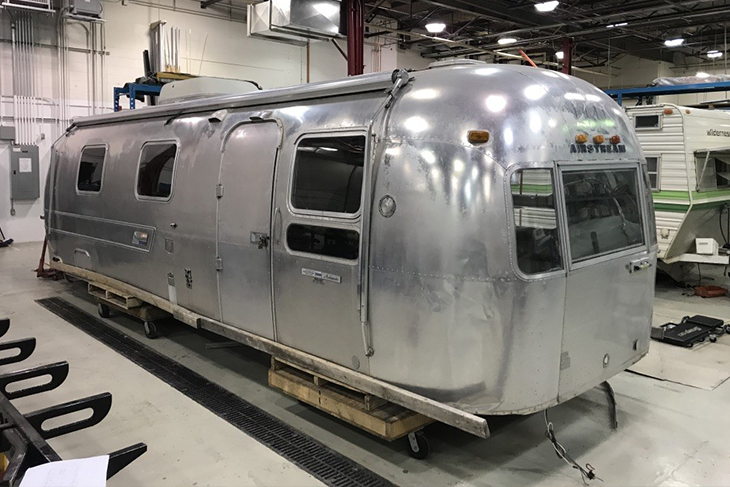
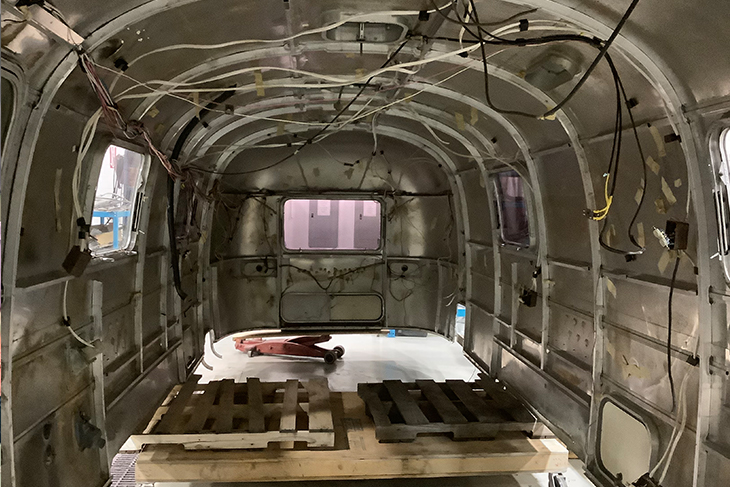
Creative roads
At first, students peppered Brandt with logistical questions: What’s your budget? What’s the timeline? What materials should we use? But the musician took them down a more creative road.
“Paul wanted us to take it to the next level. He told us, ‘Don’t just design a trailer. Think about the prairie and the sky and Alberta’s history."
“He told us not to worry about limitations, and our instructors agreed,” adds Emerson Estorninos (MET ’20). “They told us to ‘blue sky’ lots of ideas even if they sounded weird because that can spark better ideas. It really changed our whole approach and we didn’t hold back.”
Mechanical Engineering instructor Greg Ball describes the project as “a big lesson in creativity for this class and, most importantly, in how to translate big ideas into a real-world technical process that can be built and used in industry.”
Radical ideas
The class generated plenty of radical ideas such as a fold-out concert stage and a compartment for Brandt’s favourite motorcycle — even adding a second storey.
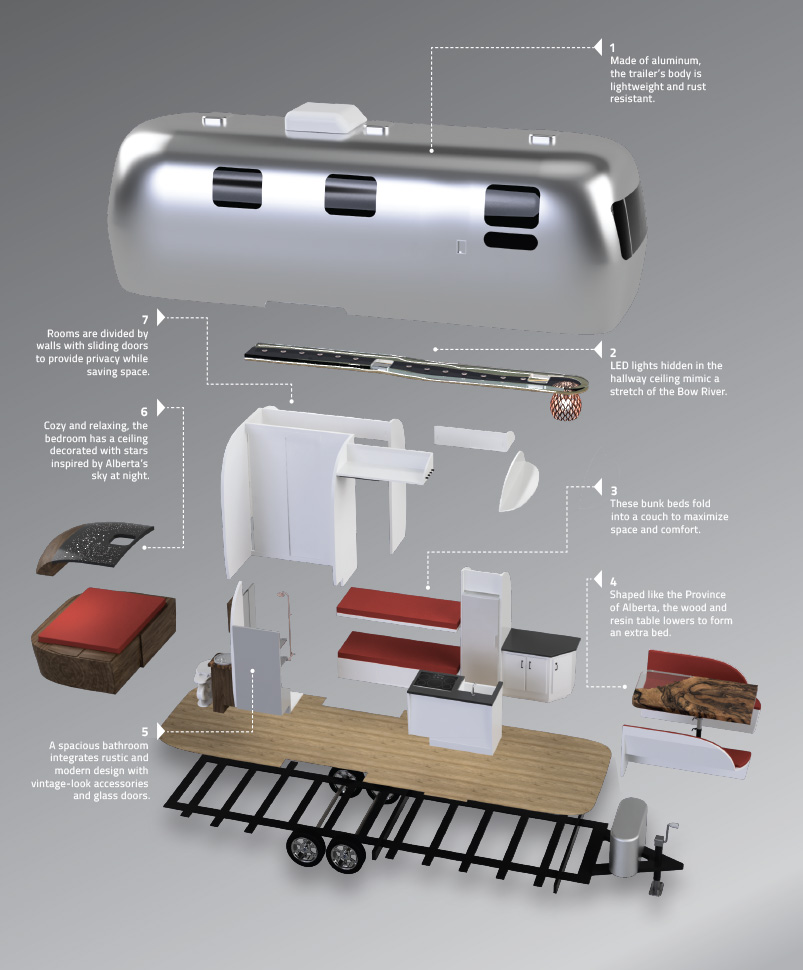
One group used 3D printing to make a scale model; another created a virtual reality trailer and invited Brandt to put on VR goggles to step inside their creation.
“VR is being used more and more to present concepts to clients,” says Daniel Swinamer (MET ’20), who spearheaded that approach. “I decided to try it in class because I know it’s the sort of thing being used in industry.”
Brandt and Robin Bunker, an instructor in SAIT’s Recreational Vehicle Service Technician Apprenticeship program, have reviewed the students’ big ideas. Now that the musician has selected his favourites, RV apprentices will bring their creativity to working on the Airstream’s makeover.
“As a Calgarian, it makes me proud to see the trailer come alive with the help of these students,” Brandt says.
A glimpse inside the classroom
View some of the behind-the-scenes photos taken during the student groups' presentations.
This story was originally written for the Spring 2020 issue of LINK magazine — SAIT in the time of COVID.

Oki, Âba wathtech, Danit'ada, Tawnshi, Hello.
SAIT is located on the traditional territories of the Niitsitapi (Blackfoot) and the people of Treaty 7 which includes the Siksika, the Piikani, the Kainai, the Tsuut’ina and the Îyârhe Nakoda of Bearspaw, Chiniki and Goodstoney.
We are situated in an area the Blackfoot tribes traditionally called Moh’kinsstis, where the Bow River meets the Elbow River. We now call it the city of Calgary, which is also home to the Métis Nation of Alberta.


